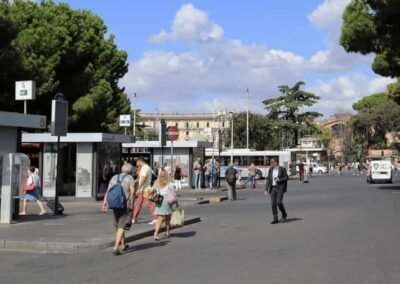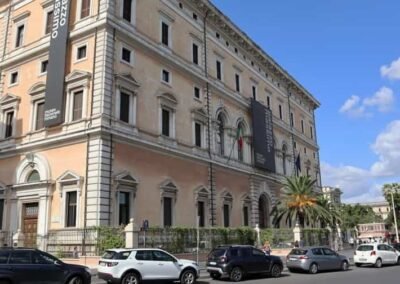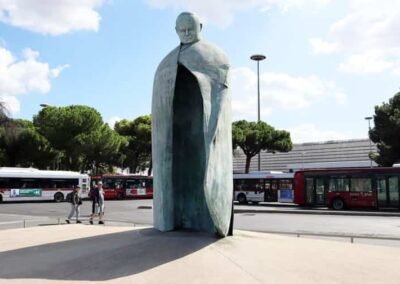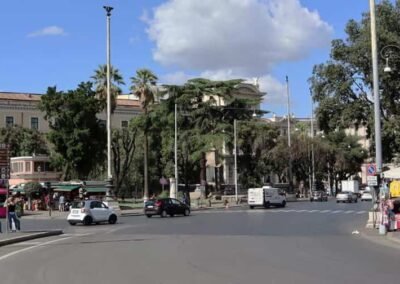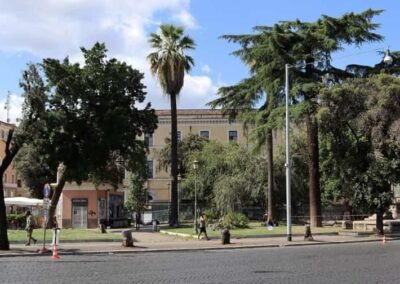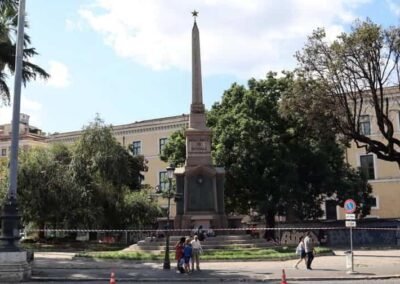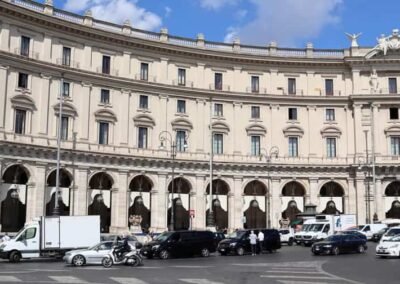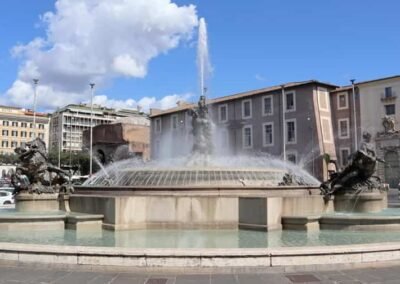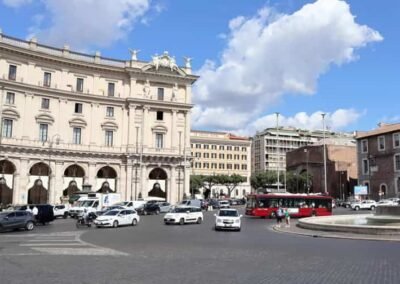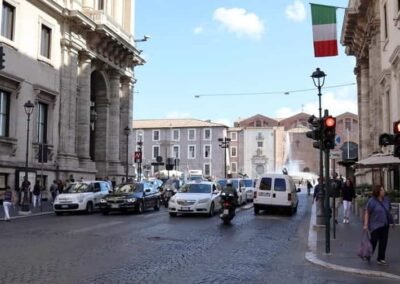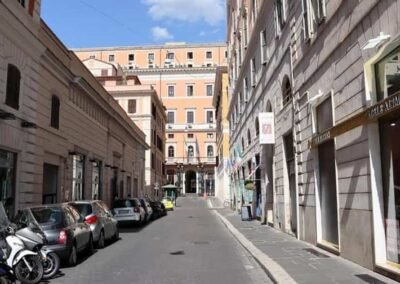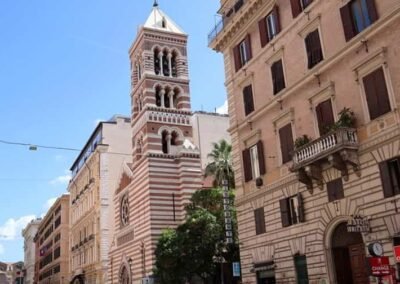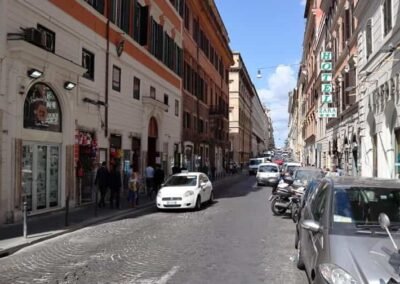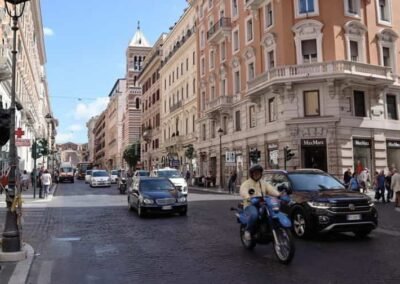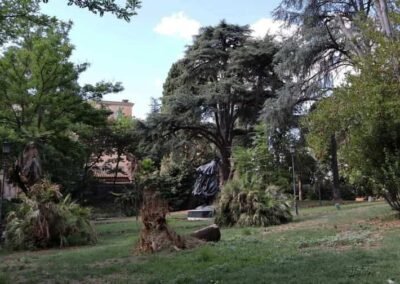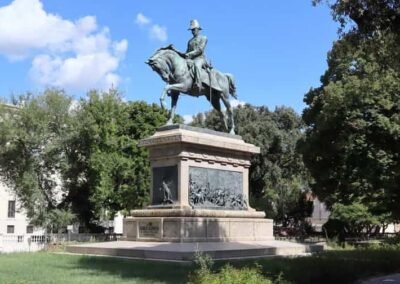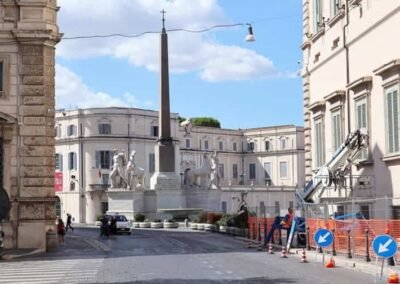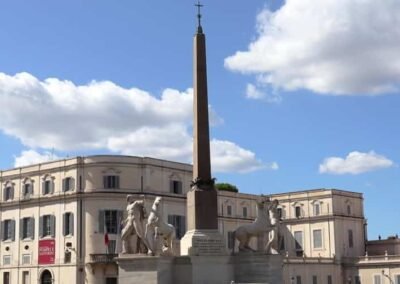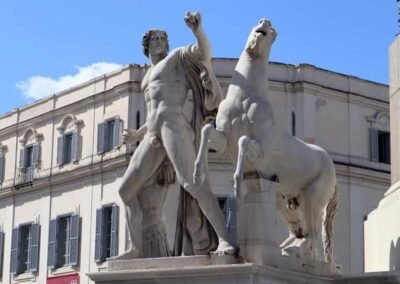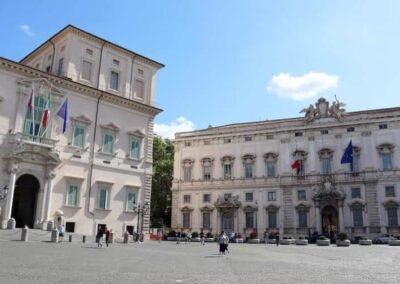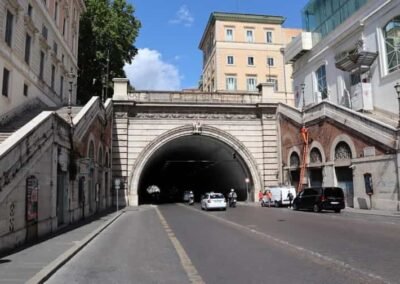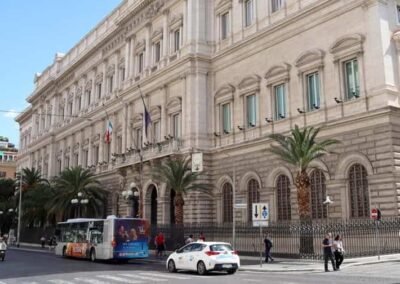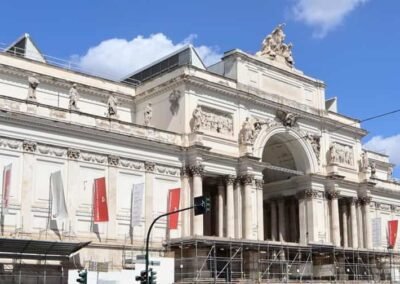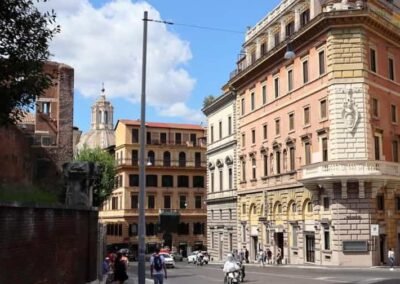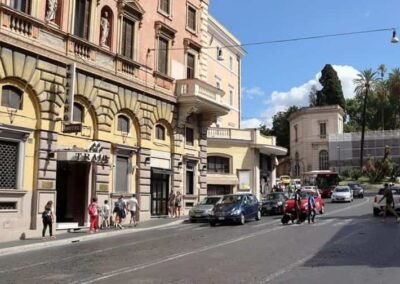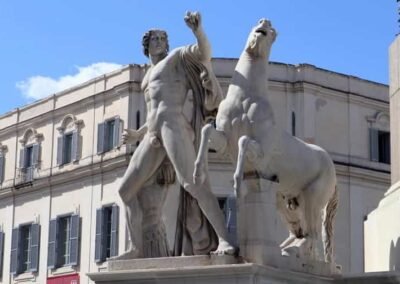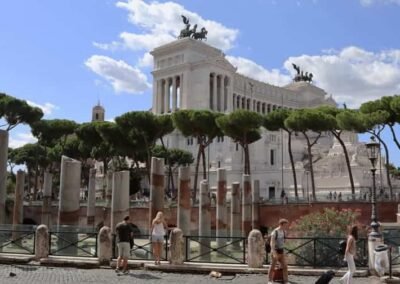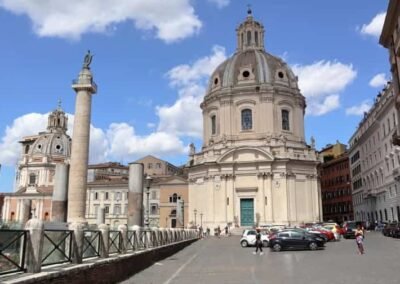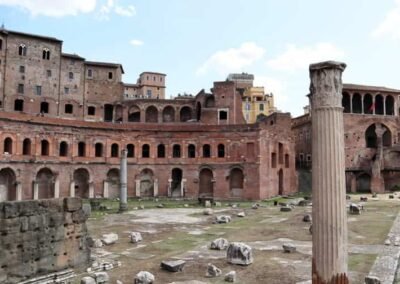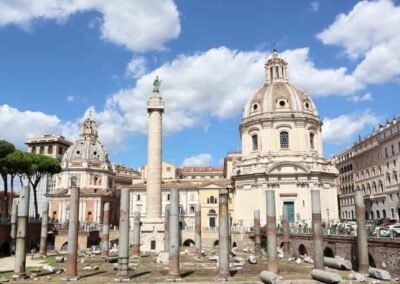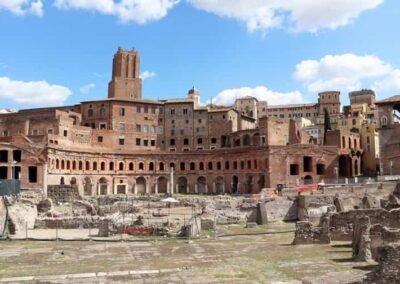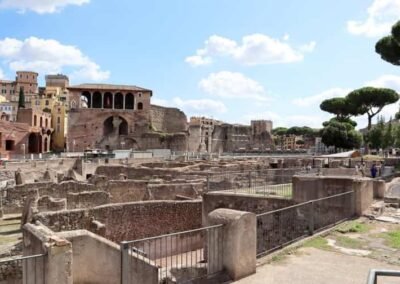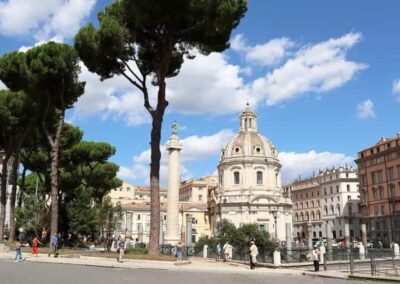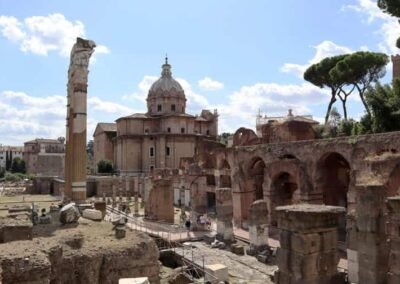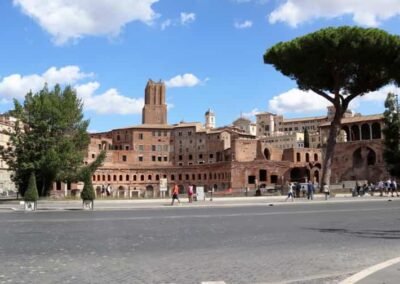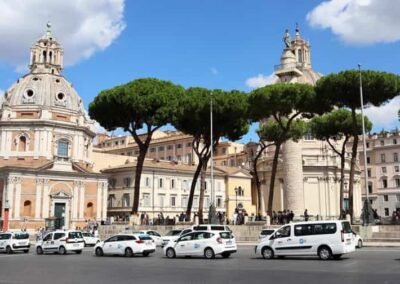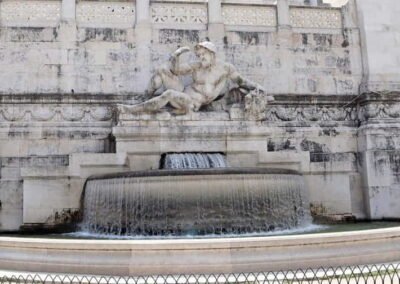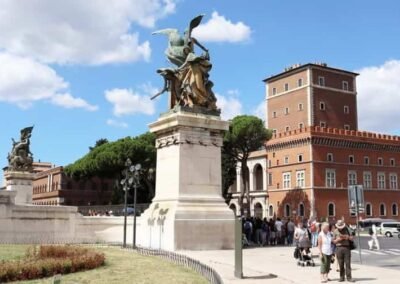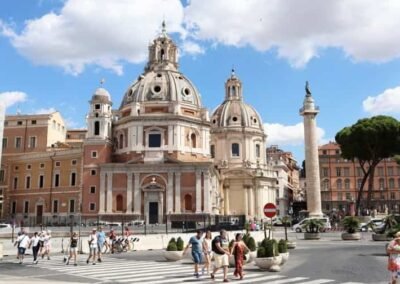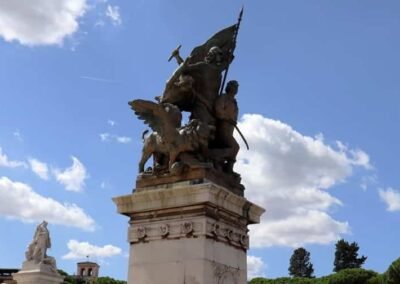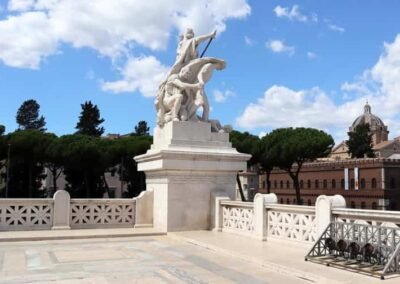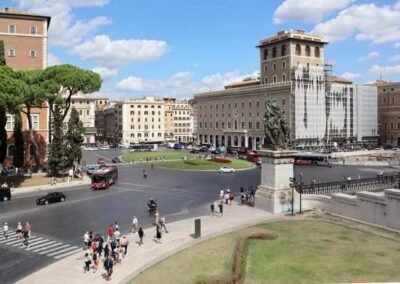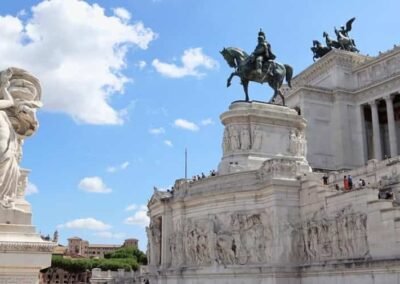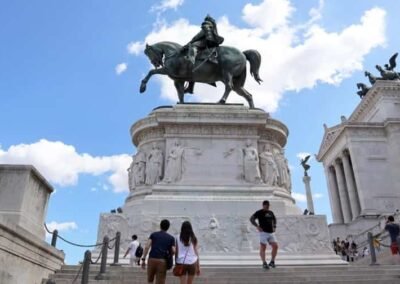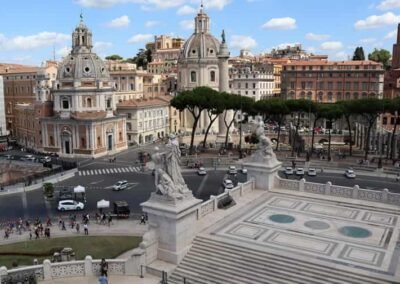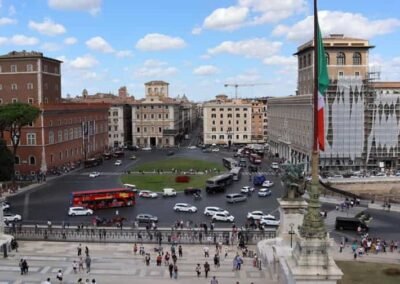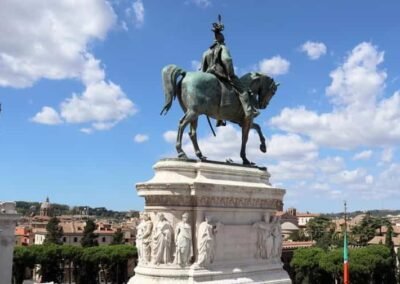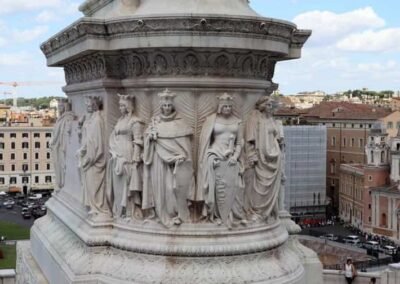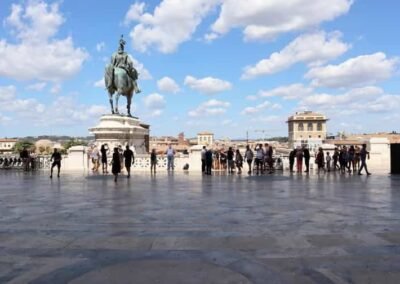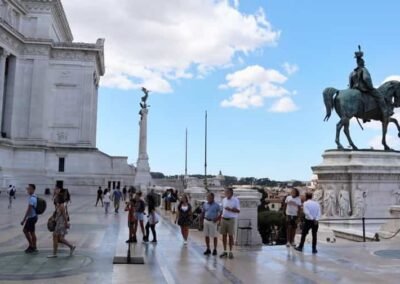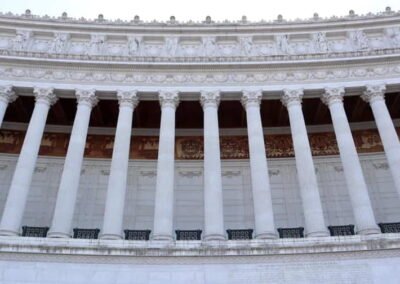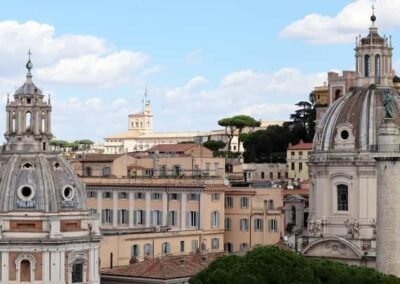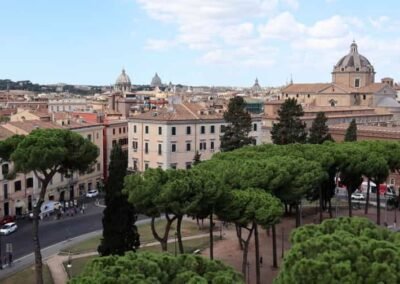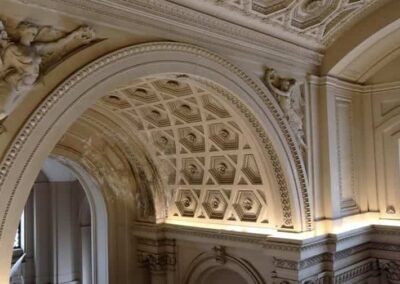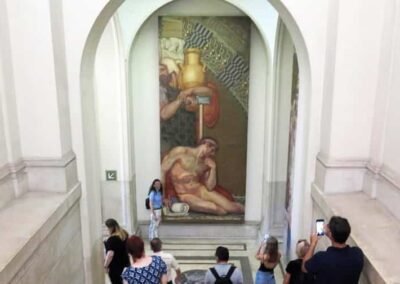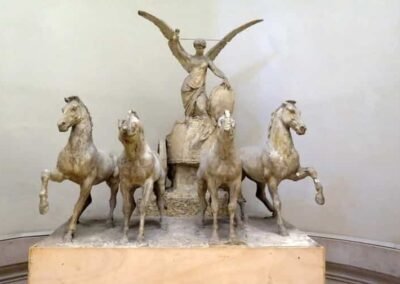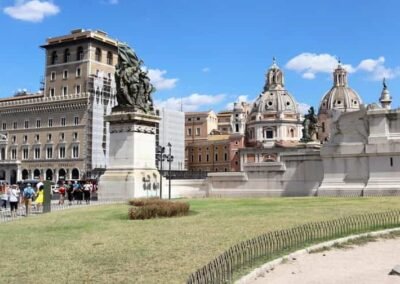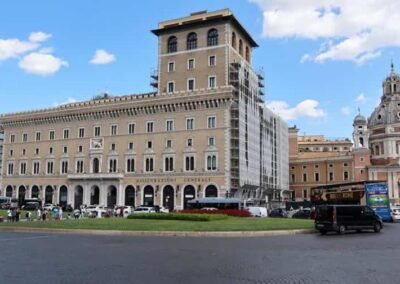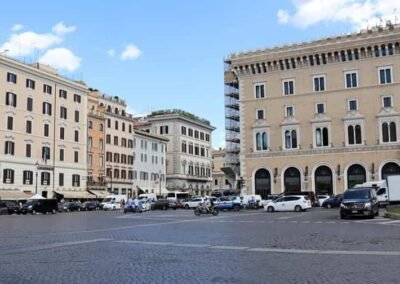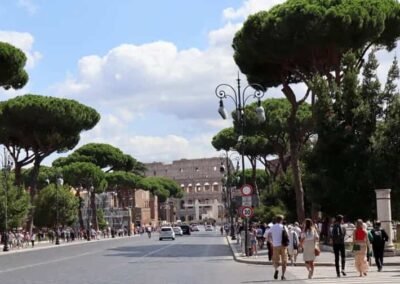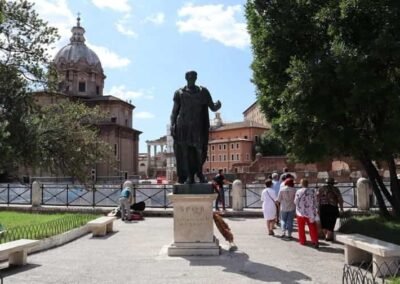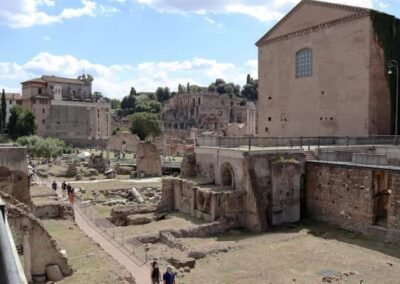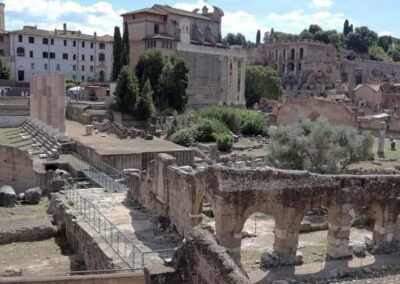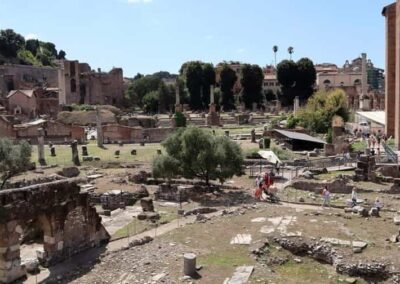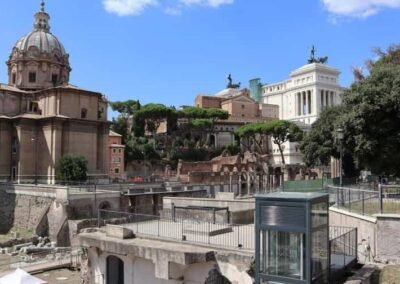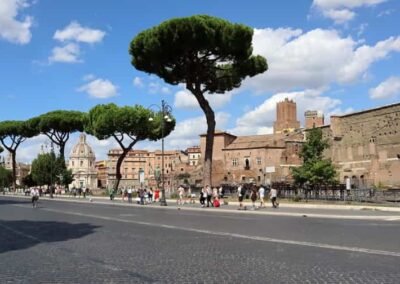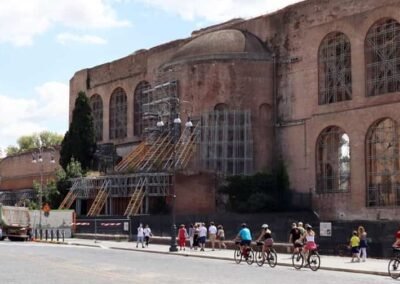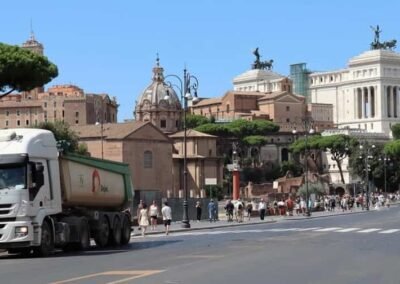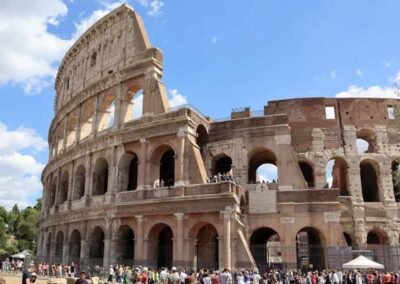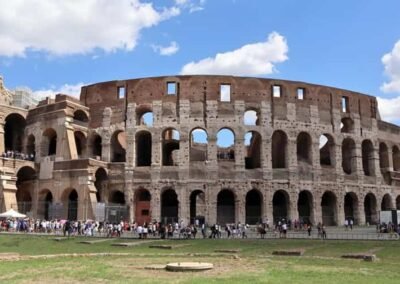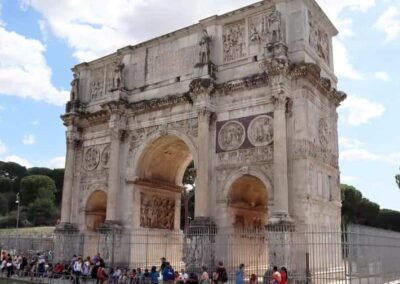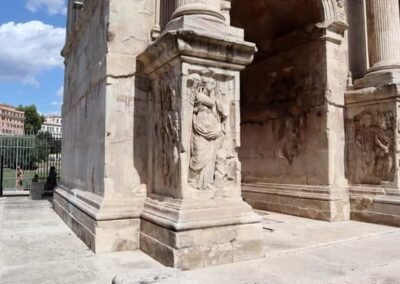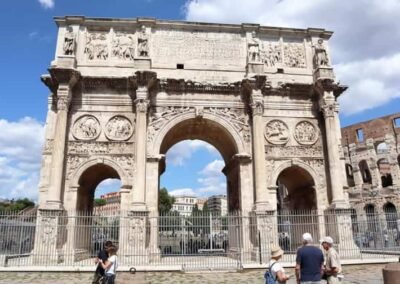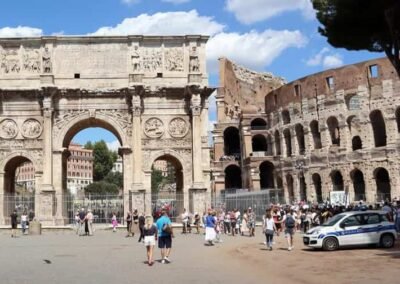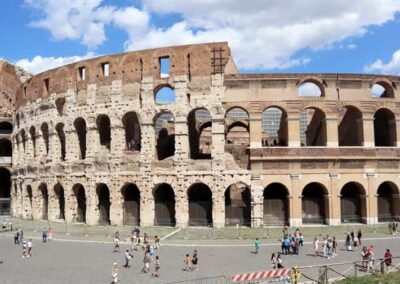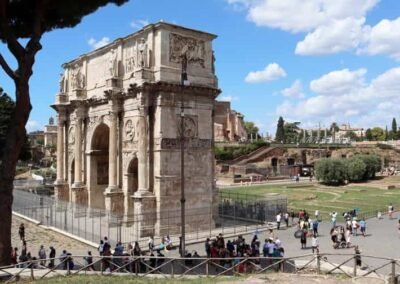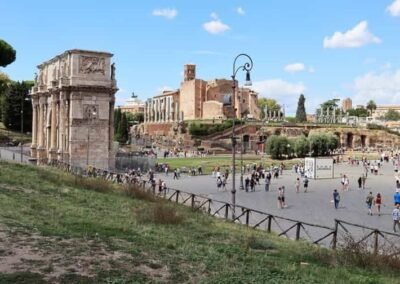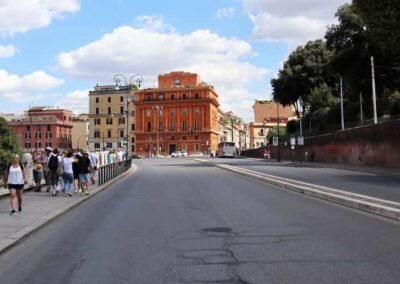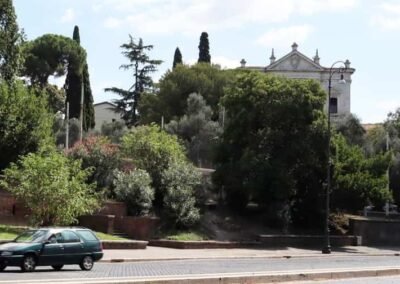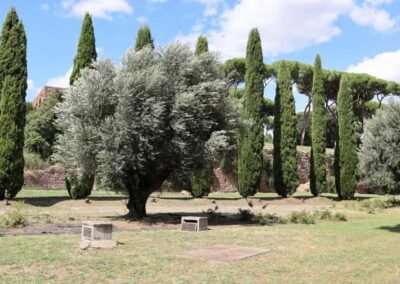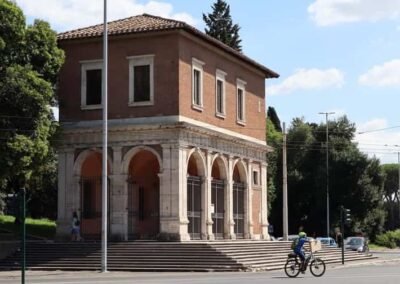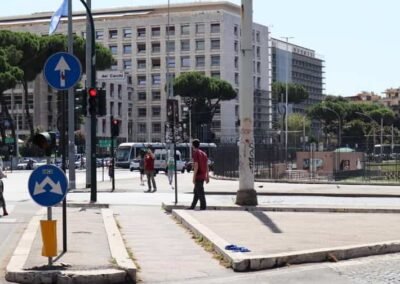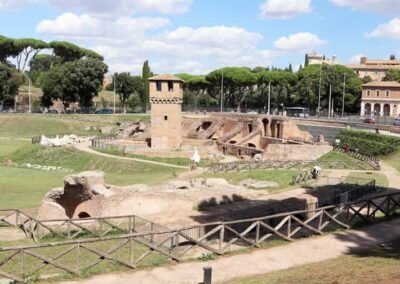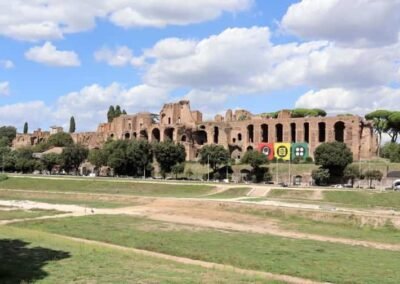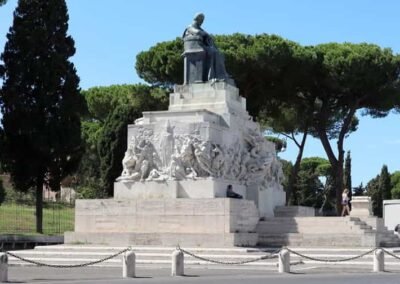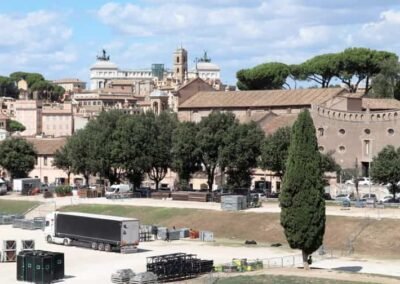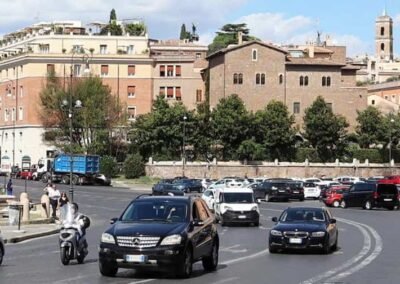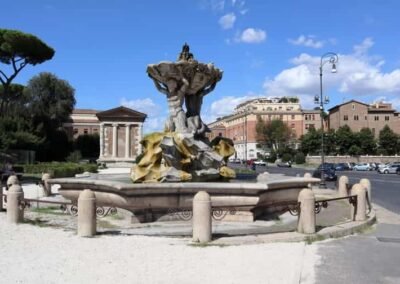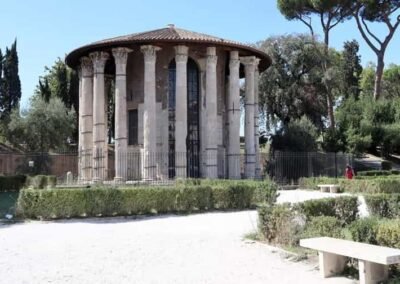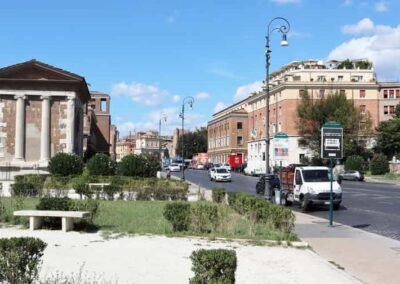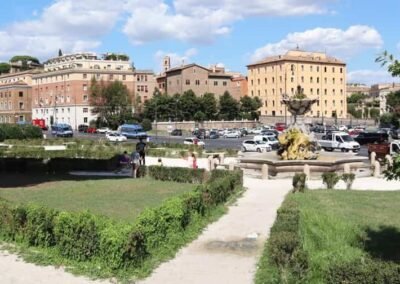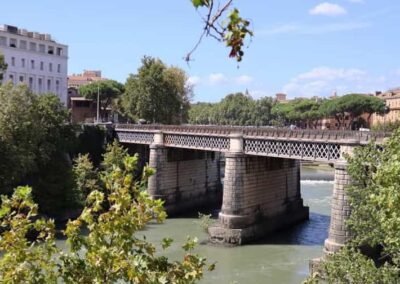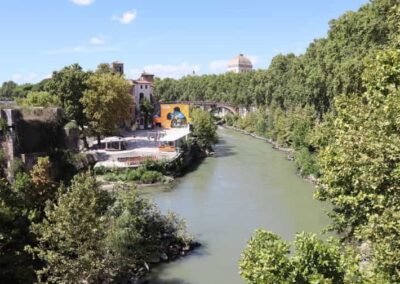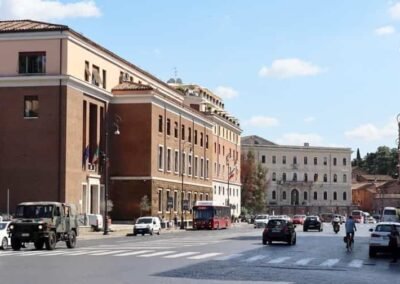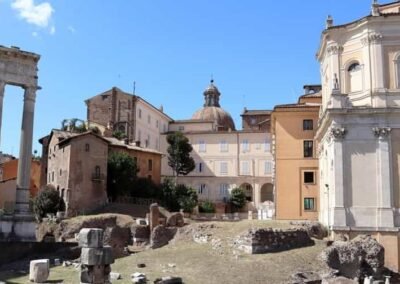HOME
THE REGIONS OF ITALY
PLACES IN ITALY
Italy in Photos
Monumento Nazionale a Vittorio Emanuele II, 00187 Roma, Italy (September 2019)
Rome
Rome, the capital of Italy, is one of the most iconic and historically significant cities in the world. Known as the “Eternal City” due to its millennia-spanning history, Rome stands as a living testament to the power, culture, and influence of ancient civilizations. It is a place where the past and present coexist harmoniously, with its grand ancient ruins, Renaissance art, baroque architecture, and bustling modern-day life weaving a rich tapestry of culture and tradition. Situated on the banks of the River Tiber in the Lazio region of central Italy, Rome is not only Italy’s political capital but also a cultural and religious centre, home to Vatican City, the seat of the Roman Catholic Church. Rome’s history spans over 2,500 years, beginning with its legendary founding in 753 BC by Romulus and Remus, the twin sons of Mars, the god of war. According to Roman mythology, Romulus killed his brother and became the first king of Rome, establishing the foundations of what would become the heart of one of the large—the Roman Empire. Over centuries, Rome expanded from a small kingdom into a vast empire that ruled over much of Europe, the Middle East, and North Africa. As the centre of the Roman Republic and later the Roman Empire, the city became the nucleus of Western civilization, influencing politics, law, architecture, art, and culture. Iconic structures such as the Colosseum, the Roman Forum, and the Pantheon, bear witness to the architectural brilliance and engineering prowess of ancient Rome. Today, these monuments stand alongside modern-day buildings, creating a cityscape where every corner tells a story of the past. Rome’s influence didn’t stop with the fall of the Roman Empire in the 5th century AD. During the Middle Ages, it continued to be a major religious centre, and by the Renaissance, it had become a key city in the rebirth of art and culture. With the support of powerful families like the Medicis and popes such as Julius II, artists like Michelangelo, Raphael, and Bernini helped shape Rome into the art capital of the world.
In addition to its rich historical legacy, Rome is also one of the most important centres for Christianity. Vatican City, an independent city-state enclaved within Rome, is the spiritual and administrative headquarters of the Roman Catholic Church and the residence of the Pope. The St. Peter’s Basilica, the largest and one of the holiest churches in Christianity, is located here. The basilica, along with the Sistine Chapel—famous for Michelangelo’s frescoes on its ceiling—is a pilgrimage site for millions of Catholics and art enthusiasts. Rome’s religious influence is not confined to Christianity alone. The city has been a centre of learning, philosophy, and political theory since ancient times. It was the birthplace of Roman law and the political philosophy of republicanism, which has had a lasting impact on the development of democratic systems in the West. Rome is a treasure trove of art and architecture that spans from the ancient world to modern times. Some of the most iconic landmarks in the city incluTrevi Fountain: One of Rome’s most famous landmarks, this Baroque fountain is a stunning example of artistry and engineering. Legend has it that tossing a coin into the fountain ensures a return trip to Rome.
While deeply connected to its past, Rome is also a bustling modern city. Its vibrant streets are filled with cafes, restaurants, fashion boutiques, and contemporary art galleries. The city is famous for its cuisine, offering traditional dishes such as carbonara, cacio e pepe, and supplì, (fried rice balls). Rome is also a hub for Italian fashion, second only to Milan, with several high-end designers and boutiques operating in the city. The mix of ancient heritage and contemporary life is what makes Rome truly unique. Walking through its streets, one can encounter centuries-old ruins next to modern-day shops, and ancient piazzas bustling with the energy of daily life. The neighbourhoods of Trastevere, Monti, and the Centro Storico offer a blend of Roman tradition with a modern twist, providing lively nightlife, local markets, and unique shops. Rome is a city that captivates the imagination, offering an unparalleled journey through history, art, religion, and modern culture. From its ancient ruins to its role as a centre of Renaissance art and Catholicism, Rome remains a city of profound global influence. Whether one is exploring its historical sites, sampling its culinary delights, or simply wandering its charming streets, Rome offers a wealth of experiences that make it a must-visit destination. The Eternal City, with its timeless allure, continues to inspire and fascinate travellers from around the world.
Worth a Visit
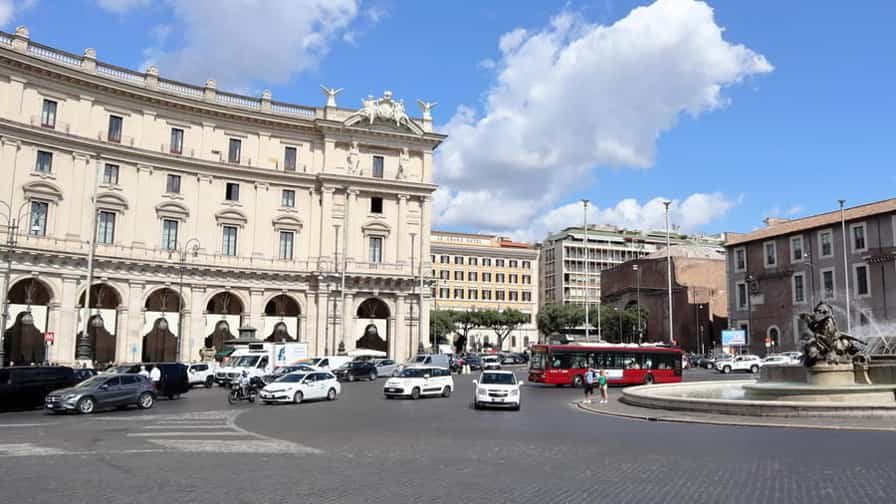
Piazza della Repubblica in Rome is one of the city’s most elegant and historic squares, blending ancient heritage with modern charm. Located near Termini Station, it sits on the site of the Baths of Diocletian, the grand Roman thermal complex dating back to the 3rd century AD. The square itself was redesigned in the late 19th century during Italy’s unification, reflecting the city’s transformation into a modern capital. Its centrepiece is the striking Fountain of the Naiads, created by sculptor Mario Rutelli in 1901, featuring graceful bronze nymphs symbolizing natural forces. Surrounding the piazza are sweeping arcades with cafés, shops, and luxury hotels, including the historic Palazzo Naiadi. Nearby, visitors can admire the Basilica of St. Mary of the Angels and the Martyrs, designed by Michelangelo within the ancient baths. Today, Piazza della Repubblica offers a lively mix of history, culture, and everyday Roman life.
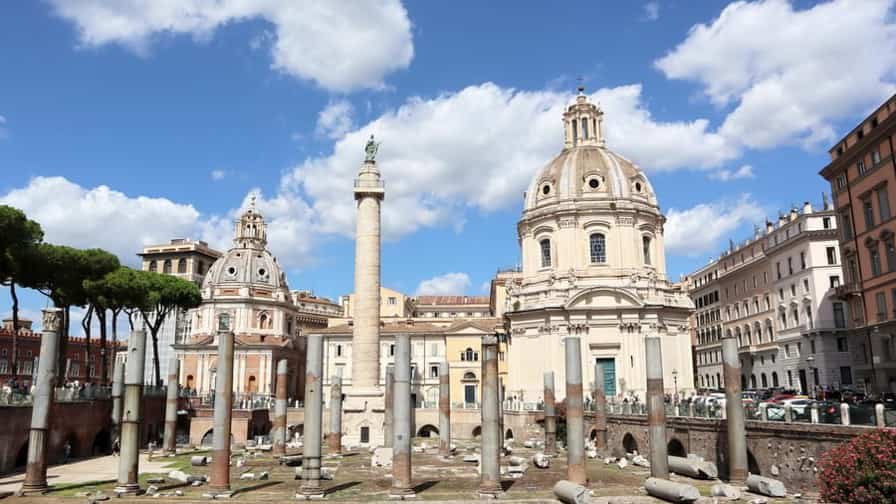
Foro Traiano, or Trajan’s Forum, is one of the most remarkable monuments of ancient Rome, showcasing the grandeur of Emperor Trajan’s reign. Built between 107 and 113 AD under the guidance of the architect Apollodorus of Damascus, it was the largest and most impressive of the Imperial Forums. The complex included vast colonnaded squares, basilicas, libraries, and the famous Trajan’s Column, which still stands today. The column, decorated with a spiralling frieze, narrates the victories of Trajan in the Dacian Wars and remains a masterpiece of Roman art and storytelling. The forum was a political, commercial, and cultural center, reflecting Rome’s power at its height. Adjacent to the forum is Trajan’s Market, an ancient complex of multi-level halls often considered the world’s first shopping mall. Today, visitors can walk among its ruins and imagine the vibrancy of Rome’s imperial past.

The Monumento Nazionale a Vittorio Emanuele II, also known as the Altare della Patria or “Altar of the Fatherland,” is one of Rome’s most iconic landmarks. Located in Piazza Venezia, it was built between 1885 and 1935 to honour King Victor Emmanuel II, the first monarch of unified Italy. The grand white marble structure, designed by Giuseppe Sacconi, features majestic stairways, sweeping colonnades, and towering statues, symbolizing Italian unity and patriotism. At its centre stands the equestrian statue of Victor Emmanuel II, while the Tomb of the Unknown Soldier, added in 1921, pays tribute to Italy’s fallen soldiers. The monument also houses the Museum of Italian Unification, offering insight into the nation’s history. From its panoramic terraces, visitors enjoy breath-taking views of the Roman Forum, Capitoline Hill, and the city beyond. Both a national symbol and a striking architectural masterpiece, it remains a must-see in Rome.
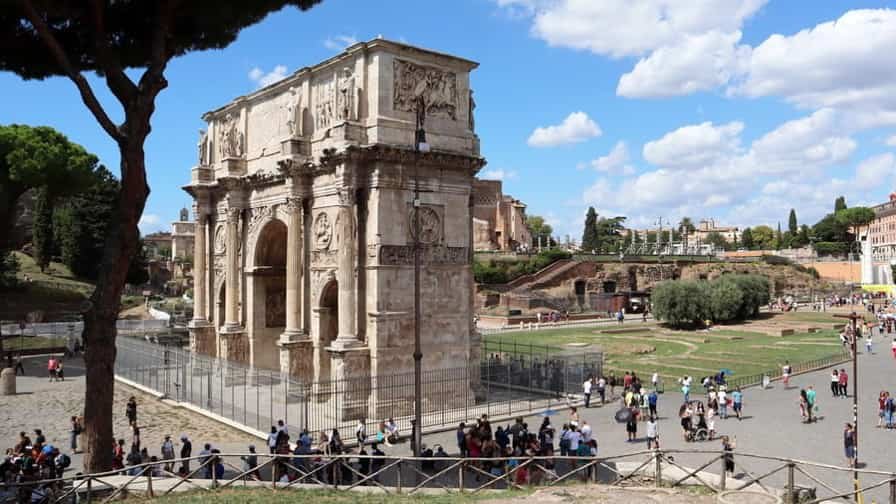
Piazza dell’Arco di Costantino is a historic square in the heart of Rome, dominated by the majestic Arch of Constantine, the largest triumphal arch in the city. Built in 315 AD, it was erected to commemorate Emperor Constantine’s victory over Maxentius at the Battle of the Milvian Bridge. The arch is richly decorated with reliefs and sculptures, many reused from earlier monuments, making it a fascinating blend of Roman art from different eras. The piazza lies between the Colosseum and the Palatine Hill, placing it at the crossroads of some of ancient Rome’s most iconic sites. Over the centuries, the arch became a symbol of imperial triumph and the dawn of Christianity, as Constantine legalized the faith soon after his victory. Today, Piazza dell’Arco di Costantino is a lively meeting point for visitors exploring the Eternal City, offering a striking glimpse into Rome’s glorious past.
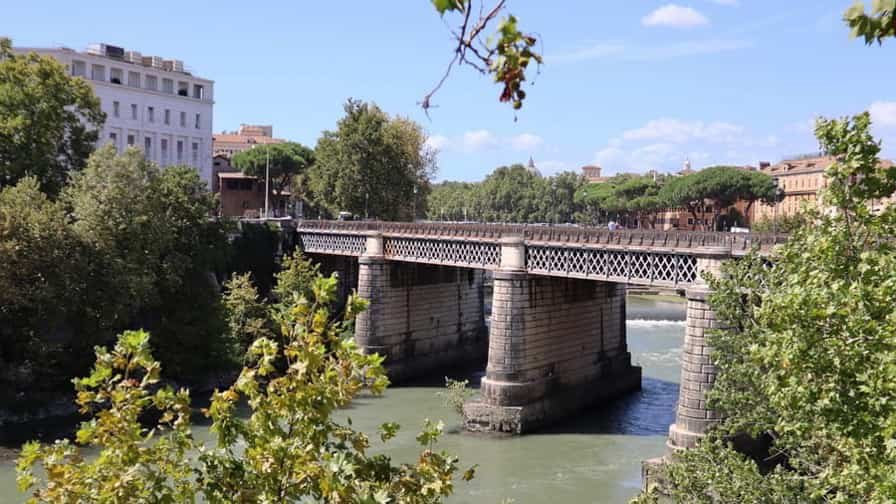
Lungotevere Aventino is a scenic stretch along the Tiber River in Rome, running at the foot of the Aventine Hill, one of the city’s legendary seven hills. This picturesque riverside promenade combines natural beauty with historical charm, offering peaceful views of the water and the bridges that cross it. Strolling here, visitors are surrounded by lush gardens and elegant residences that crown the Aventine above. Just a short walk uphill, landmarks such as the Giardino degli Aranci (Orange Garden), the Basilica of Santa Sabina, and the famous Aventine Keyhole offer some of the most enchanting panoramas of the city. Lungotevere Aventino also provides a quieter atmosphere compared to Rome’s bustling center, making it ideal for leisurely walks or evening sunsets along the river. With its blend of serenity, history, and stunning vistas, it is one of Rome’s most charming and timeless riverside avenues.
Photo Gallery of Walk 1 – Roma Termini, Piazza dei Cinquecento to Via Magnanapoli
Approximately 2.77 km – 1.72 miles
The walk starts in Roma Termini, Piazza dei Cinquecento – Viale Luigi Einaudi – Piazza della Repubblica – Fontana delle Naiadi, Piazza della Repubblica – Piazza della Repubblica – Via Nazionale – Via Napoli – Via Nazionale – Via delle Quattro Fontane – Via Nazionale – Giardino di Sant’Andrea al Quirinale, Via del Quirinale – Monumento celebrativo del “Bicentenario dei Carabinieri”, Via del Quirinale – Via del Quirinale – Statua di Carlo Alberto, Via del Quirinale – Via del Quirinale – Piazza del Quirinale – Via della Consulta – Via Piacenza – Via Milano – Via Nazionale – Via Quattro Novembre – Via Magnanapoli
Photo Gallery of Walk 2 – Foro Traiano to Monumento Nazionale a Vittorio Emanuele II
Approximately 0.38 km – 0.24 miles
The walk starts in Foro Traiano – Via dei Fori Imperiali – Piazza della Madonna di Loreto – Monumento Nazionale a Vittorio Emanuele II
Photo Gallery of Walk 4 – Via Celio Vibenna to Via del Teatro di Marcello
Approximately 2.34 km – 1.45 miles
The walk starts in Via Celio Vibenna – Via di San Gregorio – Piazza di Porta Capena – Via del Circo Massimo – Monument to Giuseppe Mazzini, Piazzale Ugo La Malfa – Piazza Bocca della Verità – Largo Amerigo Petrucci – Lungotevere Aventino – Ponte Palatino – Via di Ponte Rotto – Via del Teatro di Marcello
COPYRIGHT © 2018-2025 ITALY IN PHOTOS - ALL RIGHTS RESERVED

